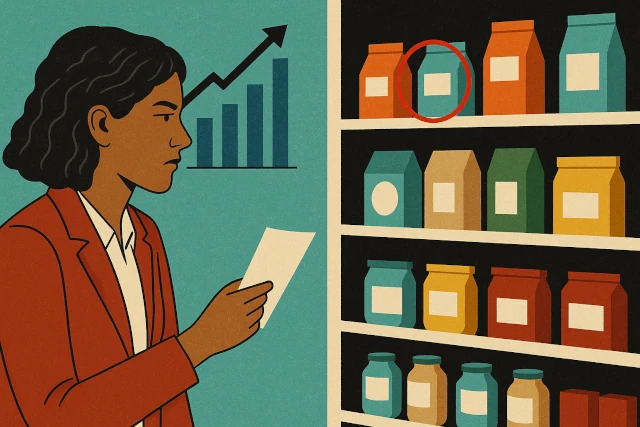How to Stay on Shelf and Grow Velocity in the First 90 Days

I Know How to Get Into Stores. But How Do I Stay on Shelf and Grow Velocity in the First 90 Days?
Everyone celebrates the moment their product lands in a big-name store. It’s a huge milestone—and rightly so. But the reality is that getting on shelf is just the beginning. Staying there and building velocity? That’s where the real work begins.
Retailers expect new products to perform fast. If your product doesn’t start moving within the first 60–90 days, there’s a high chance it’ll get discontinued or buried. But don’t panic—there are proven strategies you can use to ensure your product sells through, gets re-ordered, and catches the attention of category managers.
1. Think Like a Store Manager: Store-Level Execution Is Everything
Even the best product can fail if it’s not properly merchandised. Before you pop the champagne after your PO lands, make sure you have a rock-solid store-level plan. Here’s how:
- Visit stores in person: Don’t assume your product will be on the right shelf. Show up. Take photos. Talk to staff.
- Leave behind a one-pager: Give staff an at-a-glance sheet about your product: key benefits, how it’s priced, and what makes it different.
- Stock and face: If allowed, face your product, clean up the shelf, and ensure your product is visible.
- Check for errors: Is your UPC scanning correctly? Is your tag in place? Fixing these early can prevent a sales black hole.
2. Rethink Demos: It’s Not 2019 Anymore
In-store demos are coming back, but consumer behavior has changed. People are more cautious, more distracted, and you need a tighter pitch than ever before. Here’s how to make your demos count:
- Keep it short and safe: Pre-packaged samples or bite-size sealed containers help reassure customers.
- Train your demo reps to convert: They’re not just handing out samples—they’re sales reps. They need to know pricing, ingredients, your brand story, and your CTA (“Grab a pack today!”).
- Track your ROI: Use coupon codes, QR scans, or demo-day lift to measure success. If the lift is underwhelming, iterate fast.
3. Train and Deploy Field Teams Like a Pro
Retail execution teams can make or break your early retail success. Whether it’s your internal team or a hired demo agency, they need structured guidance. Here's how to build a killer field team strategy:
- Create a field team playbook: This should include talking points, shelf photos, escalation contacts, and weekly checklists.
- Use field reporting tools: Platforms like Repsly, GoSpotCheck, or even Google Forms can help you track in-store activity and compliance.
- Schedule routine check-ins: Weekly calls or Slack check-ins keep morale high and give you on-the-ground data you can act on.
4. Get a Category Manager’s Attention—Fast
Most founders wait too long to loop in their buyer with early performance. That’s a missed opportunity. If your product is selling well, shout it from the rooftops (strategically):
- Send weekly updates: Short and sweet: “Hi ____, just a quick note—our unit sales at Store #123 were up 23% this week. We restocked twice already. Happy to share more!”
- Leverage your broker/distributor: Have them pass along performance stats. Their voice sometimes carries more weight than yours.
- Ask for data access: If the retailer uses portals (like 8451, Retail Link, etc.), try to get access. Show them you’re serious.
5. Drive External Traffic In-Store
Don’t rely solely on foot traffic. Push people in. Use:
- Targeted geo-ads: Use Meta or Google to push local ads to people near your retailers.
- Local influencer campaigns: Gift product and ask them to post about where it’s available.
- Email and SMS your list: “Hey Toronto! We’re now at Nature’s Emporium – come say hi this Saturday!”
6. Don’t Assume the Job is Done
Too many founders ghost the store after the PO lands. Be present. Be active. Your first 90 days are a sprint, not a coast. Keep showing up until the product moves without you.
Final Thoughts
Growing velocity in the first 90 days isn’t about luck—it’s about hustle, systems, and showing your partners that you’re invested in their success too. Think like a category manager. Think like a store manager. Think like a customer.
If you can nail that trifecta, you won’t just stay on shelf—you’ll expand your footprint and set yourself up for a long, healthy retail life.










